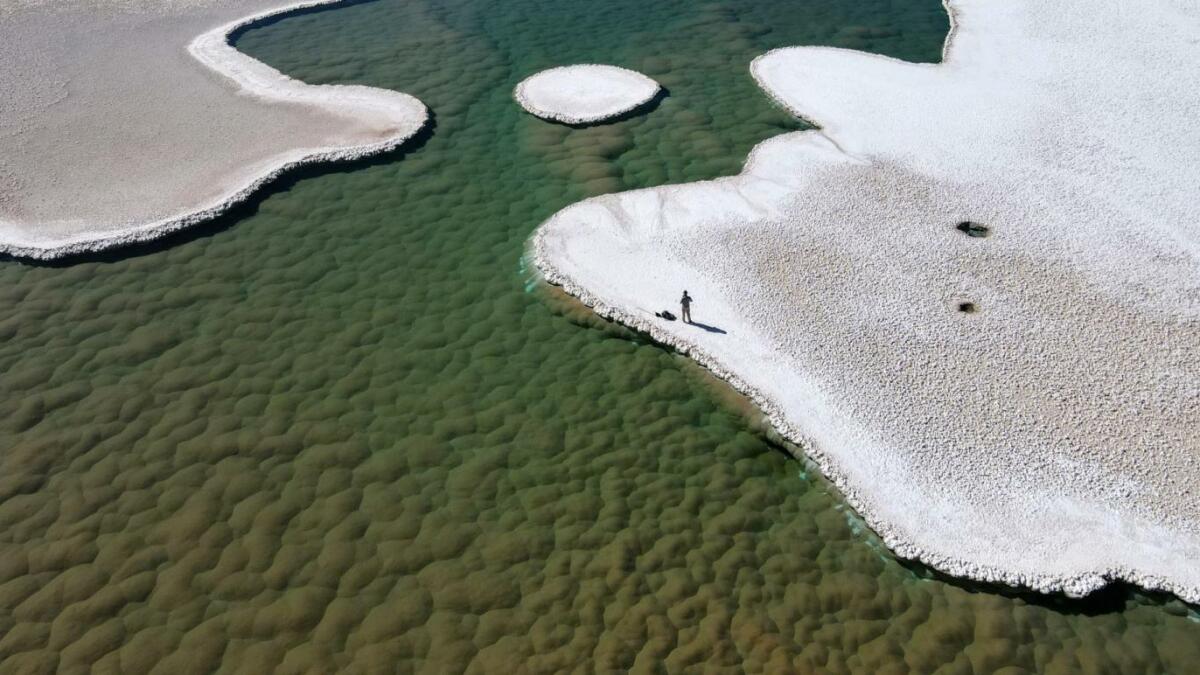- cross-posted to:
- news@lemmy.world
- cross-posted to:
- news@lemmy.world
In the profoundly remote Argentina desert, at over 12,000 feet high, and in a place where no roads go, scientists found an exotic world new to science.
Among white salt plains atop the Puna de Atacama plateau, there’s a system of greenish lagoons harboring vast bacterial communities, called stromatolites, that create layered mounds as they expand. The unique ecosystem might be a glimpse into Earth, billions of years ago, when primitive organisms first appeared on our planet.
This lagoon could be one of the best modern examples of the earliest signs of life on Earth.
Some of the oldest evidence of earthly life are preserved stromatolites, like the 3.45-billion-year-old fossilized structures found in Marble Bar, in Western Australia. Back then, photosynthesizing microbes called cyanobacteria created these layered mounds. Significant amounts of oxygen from cyanobacteria wouldn’t even appear in Earth’s atmosphere until much later, around 2.5 billion years ago.
This newly discovered environment could also hint at what the desert planet Mars was once like when it was a temperate, watery world with lakes and even roaring rivers.


